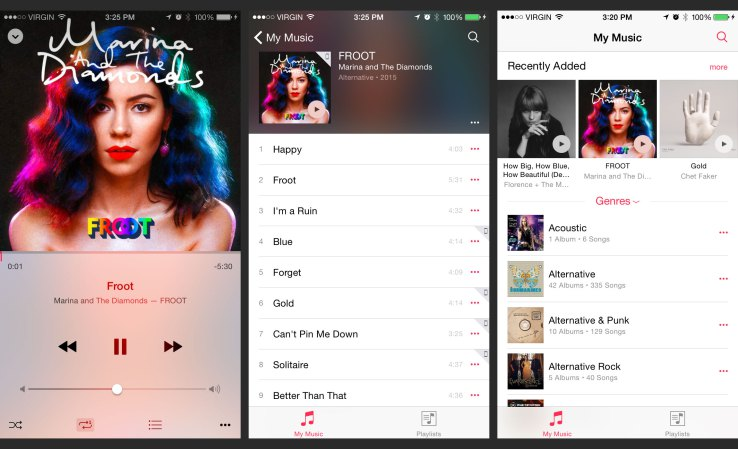Android 4.1 Jelly Bean marks a significant evolution in Google’s mobile operating systems, setting a new standard for user experience. This update, announced amidst competition from various platforms like iOS and Windows Phone, emphasizes seamless performance enhancements that enhance the user interface without being flashy. With the introduction of Project Butter, Android 4.1 improvements allow the OS to run smoothly at an impressive 60 frames per second, making interactions feel more responsive than ever. Notably, Jelly Bean features like the self-correcting homescreen layout and predictive keyboard enhance usability, illustrating Google’s commitment to refining its Android updates. As this version rolls out, it promises to transform how users engage with their devices, showcasing the stability and innovation that define Jelly Bean’s core.
The latest iteration of the Android operating system, known as Android 4.1 Jelly Bean, introduces a host of groundbreaking enhancements aimed at improving user experience. By integrating advanced features such as Project Butter, this update dramatically boosts touch responsiveness and visual fluidity. Additionally, the innovative Jelly Bean functionalities include a self-adjusting homescreen and a smarter keyboard that anticipates typing needs, streamlining how users interact with their smartphones. As the mobile landscape continues to evolve, Jelly Bean positions itself as a noteworthy contender among current mobile platforms, solidifying its place within the competitive arena. The enhancements brought forth in this iteration not only elevate performance but also enhance the overall accessibility for all users.
Understanding Android Updates
Android updates are a crucial part of maintaining the performance and security of mobile devices. Google continuously seeks to enhance user experience and system functionality through its numerous Android updates, the latest being Android 4.1 Jelly Bean. These updates typically come with a plethora of features and enhancements that improve the operating system’s efficiency. Users are encouraged to keep their devices updated to take advantage of improved security measures and new capabilities that each version brings.
Historically, Android updates have varied in scale from minor bug fixes to major overhauls that change the user interface fundamentally. Each incremental update often aims to address user feedback, introduce new features, or optimize performance — as seen with past releases. With mobile operating systems continuously evolving, staying informed about Android updates ensures users will know how to maximize their device’s potential.
Key Features of Android 4.1 Jelly Bean
Android 4.1 Jelly Bean introduces several notable features that enhance user interaction and system performance. One of the most significant upgrades is “Project Butter,” which has transformed the responsiveness of Android devices dramatically. With a target performance of 60 frames per second, users can expect smoother animations and overall system fluidity. This improvement not only makes using the device more enjoyable but also increases overall productivity by enabling quicker responses to user inputs.
Another exciting feature in Jelly Bean is the self-correcting homescreen layout. Widgets now dynamically resize to utilize available screen space more effectively, while app shortcuts can adjust themselves around the widgets. This enhancement provides a cleaner, more organized user experience and mitigates frustrating layout issues that earlier versions of Android presented. By improving the adaptability of the homescreen, Jelly Bean aligns with user preferences for personalized, functional interfaces.
The Impact of Project Butter on Performance
Project Butter significantly reshapes the way Android runs, focusing on seamless operations and improved touch responsiveness. By optimizing CPU performance when the screen is touched, Jelly Bean ensures that users experience instantaneous feedback. This enhancement not only contributes to a more engaging user interface but also ensures that tasks such as gaming and multitasking are smoother, which is vital for users relying on their devices for both leisure and productivity.
Moreover, the improvements brought by Project Butter extend to various apps and services within the Android ecosystem. Users may notice that commonly used applications, such as web browsers and media players, operate more efficiently, reducing frustration caused by loading times or sluggish responsiveness. This level of refinement reflects Google’s commitment to providing a competitive edge in the mobile operating systems market.
Enhancements in Usability with Jelly Bean
Android 4.1 brings numerous usability enhancements — a highlight being the predictive keyboard that accurately suggests words as the user types. By leveraging context-based predictions, it significantly reduces typing efforts, making the experience more efficient, especially for those who frequently communicate through text messages or emails. This feature aligns well with modern communication trends and user habits, promoting a faster, more intuitive typing experience.
In addition, Jelly Bean introduces an offline mode for speech recognition and voice typing, allowing users to dictate messages without an internet connection. This advancement addresses user needs for flexibility and convenience, especially in low connectivity environments. These usability improvements collectively reflect a thoughtful response to contemporary smartphone use, ensuring that users can access features that enhance their digital communication.
Improving Accessibility in Android Jelly Bean
Accessibility is a key focus in Android 4.1 Jelly Bean, with features like improved Gesture Mode combining touch and voice for better support of visually impaired users. This thoughtful integration allows for a more inclusive environment where all users can navigate through their devices effectively. By recognizing the importance of accessibility features, Jelly Bean sets a precedent in ensuring that technology serves a diverse audience.
Furthermore, Jelly Bean’s enhancements in language support—including languages such as Arabic and Hindi—reflect Google’s commitment to serving a global user base. Bi-directional text support enables users to engage with content in their native languages, significantly enhancing usability for non-English speakers. These initiatives not only improve personal accessibility but also enhance the overall functionality of the device in a multicultural context.
The Evolution of the Camera App in Jelly Bean
One of the significant upgrades in Android 4.1 is the overhauled camera app that now features a handy review mode for previously taken photos. This allows users to swipe through their images and discard unwanted ones efficiently, mimicking the intuitive design found in modern web applications. With pinch-to-zoom gestures, Jelly Bean ensures that users can manage and review their photos with greater ease, making mobile photography a more enjoyable experience.
Additionally, the integration of Google Chrome as the primary browser signifies a shift toward a more cohesive browsing experience, wherein users can enjoy faster speeds and improved usability inherent in Chrome’s design. Such enhancements directly impact users who increasingly rely on their devices for photography and browsing, emphasizing the comprehensive approach Jelly Bean takes in improving the overall user experience.
Android Beam and NFC Integration in Jelly Bean
With the introduction of Android Beam, Jelly Bean enables inter-device communication using NFC, simplifying the sharing of files, links, and media between devices. By leveraging Bluetooth for information transfer, users can easily share content in close proximity without the hassle of traditional connection methods. This functionality embodies the spirit of collaboration fostered by mobile technology and represents a substantial leap in the user experience.
Moreover, as more devices incorporate NFC capabilities, the relevance of features like Android Beam continues to grow. The automation of sharing experiences has awakened new possibilities for social interactions, making events and gatherings more engaging. This innovation reaffirms Google’s commitment to creating a more interconnected tech ecosystem, where sharing is seamless and user-friendly.
Interactive Notification System in Jelly Bean
Android 4.1 Jelly Bean introduces an actionable notification system that enhances how users engage with alerts from their applications. Users can respond to notifications directly from the notification tray, eliminating the need to open individual apps for tasks like checking emails or replying to messages. This streamlined approach significantly improves user efficiency and offers a more coherent experience while managing multiple notifications.
The resemblance of Jelly Bean’s notification system to Microsoft’s hub/tile structure further emphasizes Google’s understanding of user interface design trends. By adopting features that elevate functionality, Android remains competitive within the mobile landscape. This improved actionable system not only simplifies interactions but also enriches the user experience, leading to heightened satisfaction and productivity.
Voice Search Evolution with Jelly Bean
Google Voice Search underwent substantial changes in Jelly Bean, adopting a question-and-answer style similar to that of Apple’s Siri. This shift positions voice search as not just a tool but as an interactive feature that enhances user engagement and access to information. By allowing users to interact naturally with their devices, Jelly Bean emphasizes the importance of voice input in modern mobile operating systems.
Such advancements in voice search signal a growing trend where artificial intelligence and user experience converge. Users are increasingly relying on voice commands for hands-free interaction, and Jelly Bean’s enhancements effectively bridge the gap between technology and usability. As Google fine-tunes voice search capabilities, it encapsulates the evolving landscape of mobile operating systems where intuitive interactions reign supreme.
Frequently Asked Questions
What are the main features of Android 4.1 Jelly Bean?
Android 4.1 Jelly Bean introduced several significant features including ‘Project Butter’, which enhances the system’s smoothness with 60 frames per second performance. It also offers a self-correcting homescreen layout, a predictive keyboard, offline speech recognition, improved gesture mode, a revamped camera app, Google Chrome as the default browser, an actionable notification system, and Google Voice Search capabilities.
How does Project Butter improve the Android 4.1 Jelly Bean experience?
Project Butter is a key feature of Android 4.1 Jelly Bean that significantly enhances user experience by ensuring the operating system runs at 60 frames per second, making animations and touch responsiveness much smoother. It optimizes CPU performance when interacting with the touchscreen, resulting in a more fluid and responsive experience for users.
What improvements does Android 4.1 Jelly Bean offer for accessibility?
Android 4.1 Jelly Bean improves accessibility through its enhanced gesture mode, which allows visually impaired users to combine touch and voice controls. This makes the operating system more inclusive by providing diverse input options and easing navigation for users who require assistance.
How does the notification system in Android 4.1 Jelly Bean differ from previous versions?
The notification system in Android 4.1 Jelly Bean has been revamped to be more actionable, allowing users to respond to notifications directly without opening apps. For example, users can make calls from notifications, view full Gmail inboxes from alerts, and interact with Google Plus posts right in the notification tray.
What are the language support improvements in Android 4.1 Jelly Bean?
Android 4.1 Jelly Bean expands language support significantly by incorporating additional input languages such as Arabic, Hebrew, Persian, Hindi, and Thai. It also adds bi-directional text support, enhancing usability for speakers of these languages.
Is the Google Chrome browser included in Android 4.1 Jelly Bean?
Yes, Android 4.1 Jelly Bean replaces the stock Android browser with Google Chrome, offering improved performance, features, and a better browsing experience for users.
What is the significance of offline speech recognition in Android 4.1 Jelly Bean?
The offline speech recognition feature in Android 4.1 Jelly Bean allows users to perform voice typing and command functions without a data connection, providing flexibility and convenience for users in areas with limited internet access.
How does Android 4.1 Jelly Bean enhance the camera app?
The Jelly Bean Camera app features a new review mode, providing users with an intuitive way to navigate their photos. With pinch-to-zoom functionality and the ability to swipe to discard photos, it offers a more user-friendly experience similar to a filmstrip view.
What are the benefits of Android Beam in Jelly Bean?
Android Beam, included in Android 4.1 Jelly Bean, enables users to easily share content between devices using NFC technology, with seamless transfers via Bluetooth. This makes sharing photos, apps, and other data simple and fast between compatible devices.
How does the predictive keyboard work in Android 4.1 Jelly Bean?
The predictive keyboard in Android 4.1 Jelly Bean anticipates words as users type, based on contextual understanding. This feature helps in speeding up typing and enhancing accuracy, ultimately improving the overall input experience on Android devices.
| Feature | Description |
|---|---|
| Project Butter | Overhauls Android’s rendering and execution to achieve a consistent 60 frames per second and improved touch responsiveness. |
| Self-Correcting Homescreen | Widgets resize and shortcuts realign automatically to fit available space on the homescreen. |
| Predictive Keyboard | Anticipates the next word based on contextual usage. |
| Offline Voice Recognition | Supports offline speech recognition and voice typing. |
| Enhanced Language Support | Now includes support for Arabic, Hebrew, Persian, Hindi, and Thai with bi-directional text. |
| Improved Gesture Mode | Combines touch and voice for better accessibility for visually impaired users. |
| New Jelly Bean Camera App | Features a review mode with pinch-to-zoom and options to discard photos easily. |
| Android Beam | Enables NFC inter-device communication while transferring data via Bluetooth. |
| Google Chrome Browser | Replaces the stock Android browser for improved performance and features. |
| Actionable Notifications | Enhanced notifications allow direct actions within the notification tray. |
| Google Voice Search | Adopts a question-and-answer model similar to Siri by Apple. |
| Multicast DNS Discovery | Allows apps to find and connect to services on peer devices over Wi-Fi. |
Summary
Android 4.1 Jelly Bean represents a significant step forward in refining the Android operating system. With features like Project Butter enhancing performance to a smooth 60 frames per second and a self-correcting homescreen that adapts dynamically, users can expect a more intuitive and fluid experience. Its offline speech recognition and predictive keyboard improve usability, while enhanced language support broadens accessibility. With the new Jelly Bean Camera and actionable notifications, Android 4.1 Jelly Bean is designed to meet the needs of today’s mobile users, making it a noteworthy update in the Android ecosystem.



